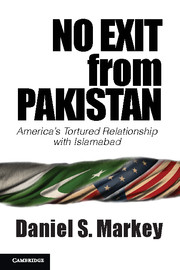3 - Why Do They Hate Us?
Published online by Cambridge University Press: 05 June 2014
Summary
Since Pakistan's founding in 1947, its relationship with the United States has gone through extreme highs and lows. Pakistanis often talk of American swings from alliance to abandonment. If the post-9/11 period of cooperation runs its course and ends in estrangement or conflict, it would only reinforce that long-standing pattern and lend credence to the idea that Washington and Islamabad are incapable of building a lasting foundation for any sort of mutually beneficial relationship.
Part of the problem between the United States and Pakistan throughout the first five decades of their interaction was that both sides failed to value the relationship on its own terms. In its cooperation with many other states, the United States often sees inherent value in trade, cultural affinities, or a shared worldview. In cooperation with Pakistan, on the other hand, Washington tended to focus on external goals, such as containing communism, opening secret talks with Beijing, or arming the Afghan mujahedeen. American leaders saw Pakistan as but a pawn in the broader geopolitical chess match.
Information
- Type
- Chapter
- Information
- No Exit from PakistanAmerica's Tortured Relationship with Islamabad, pp. 72 - 104Publisher: Cambridge University PressPrint publication year: 2013
